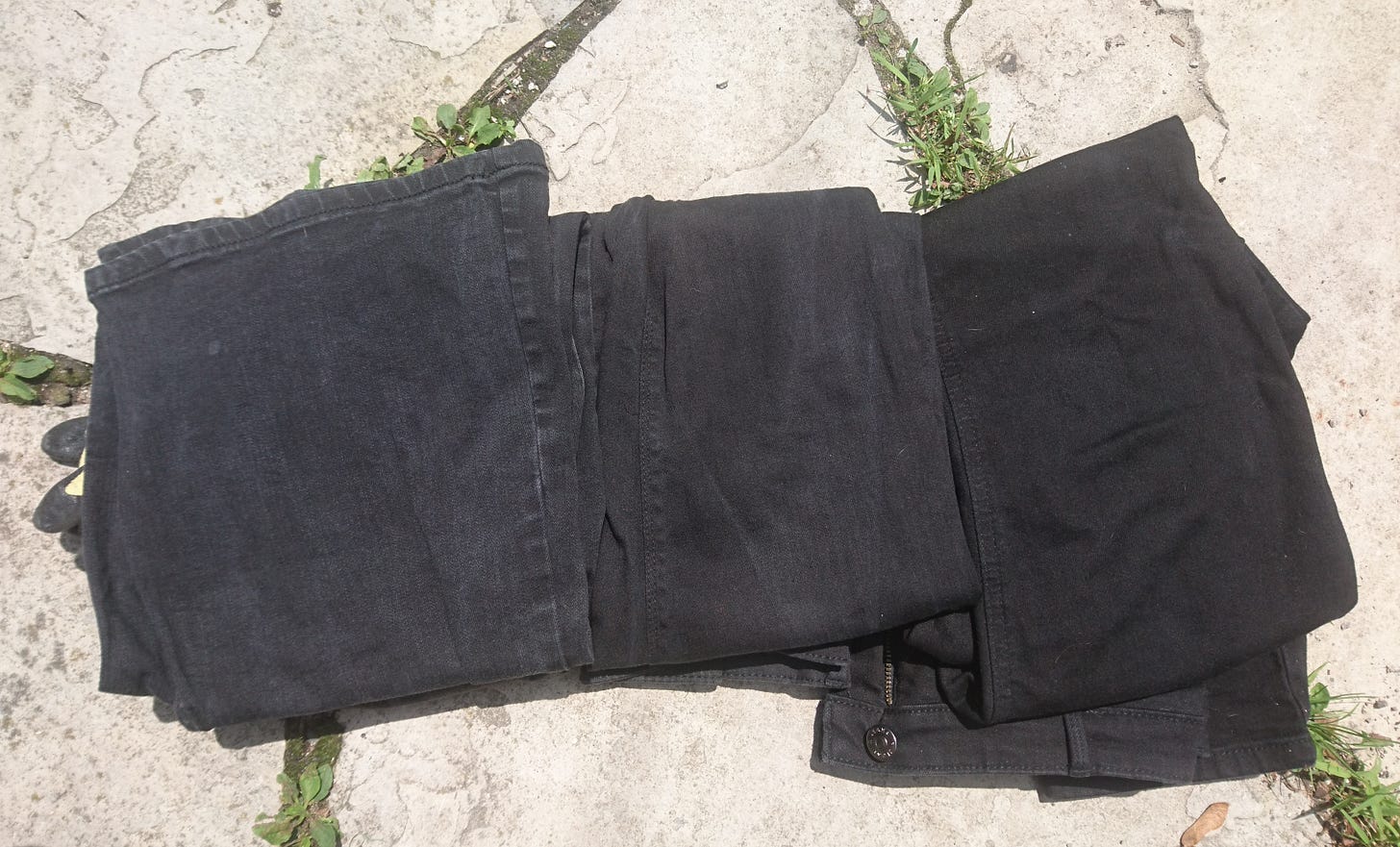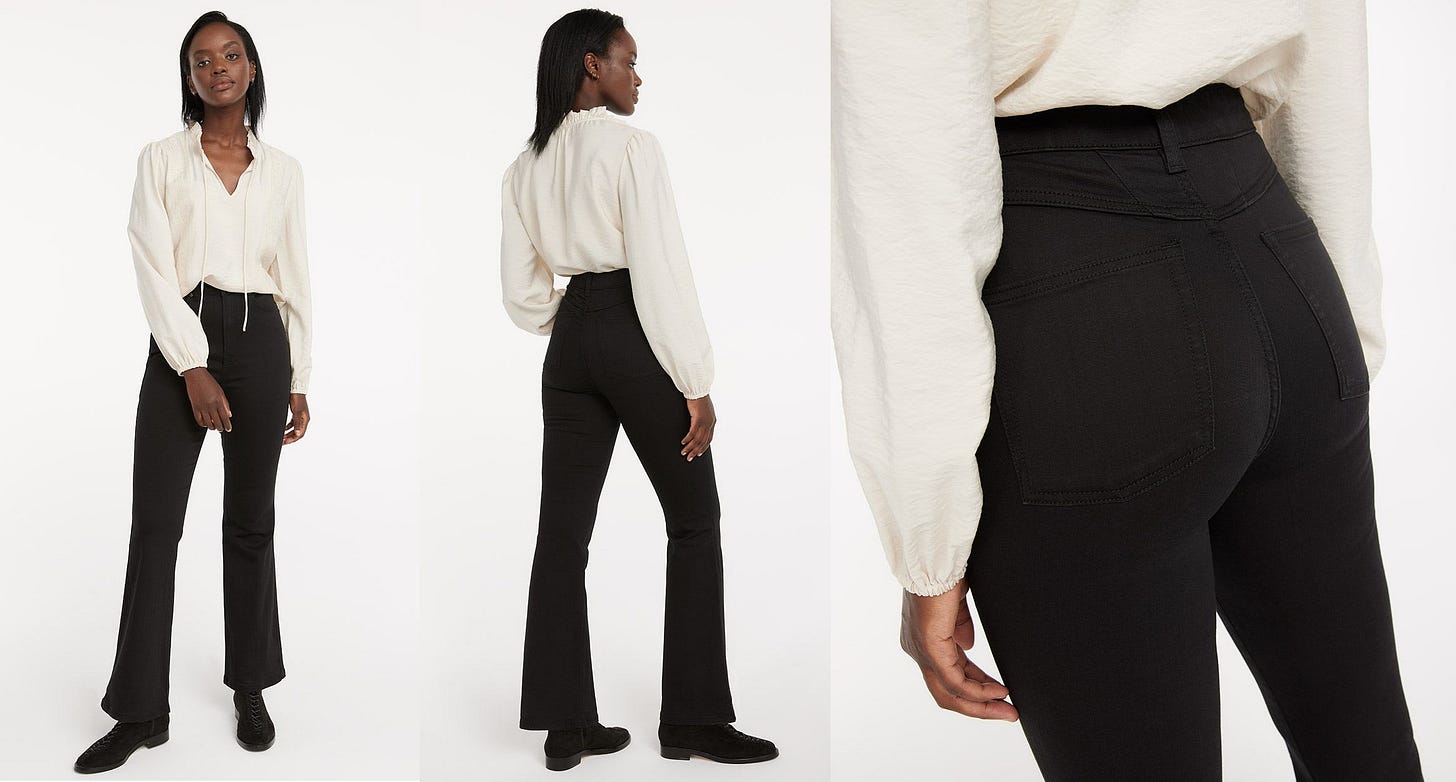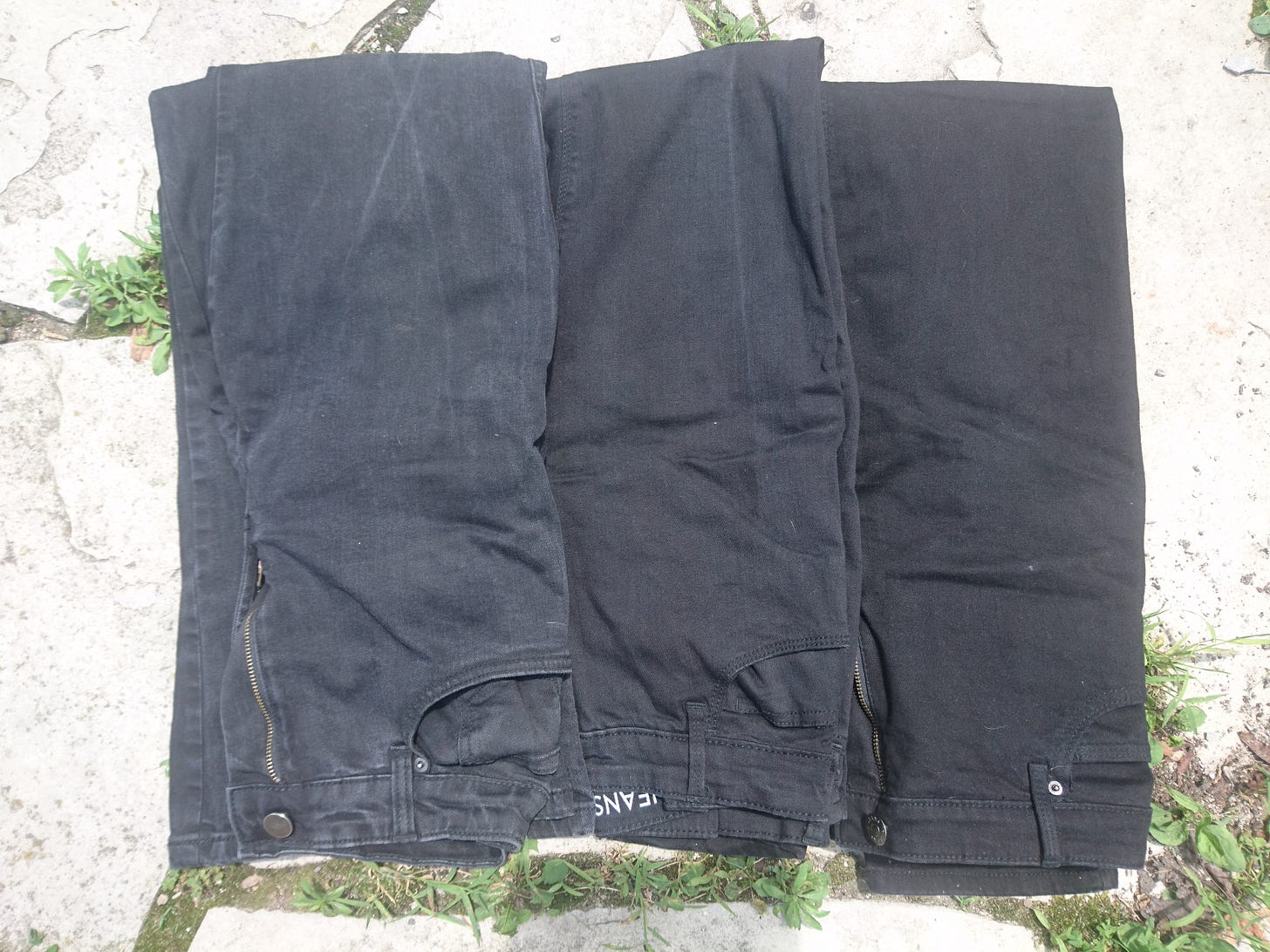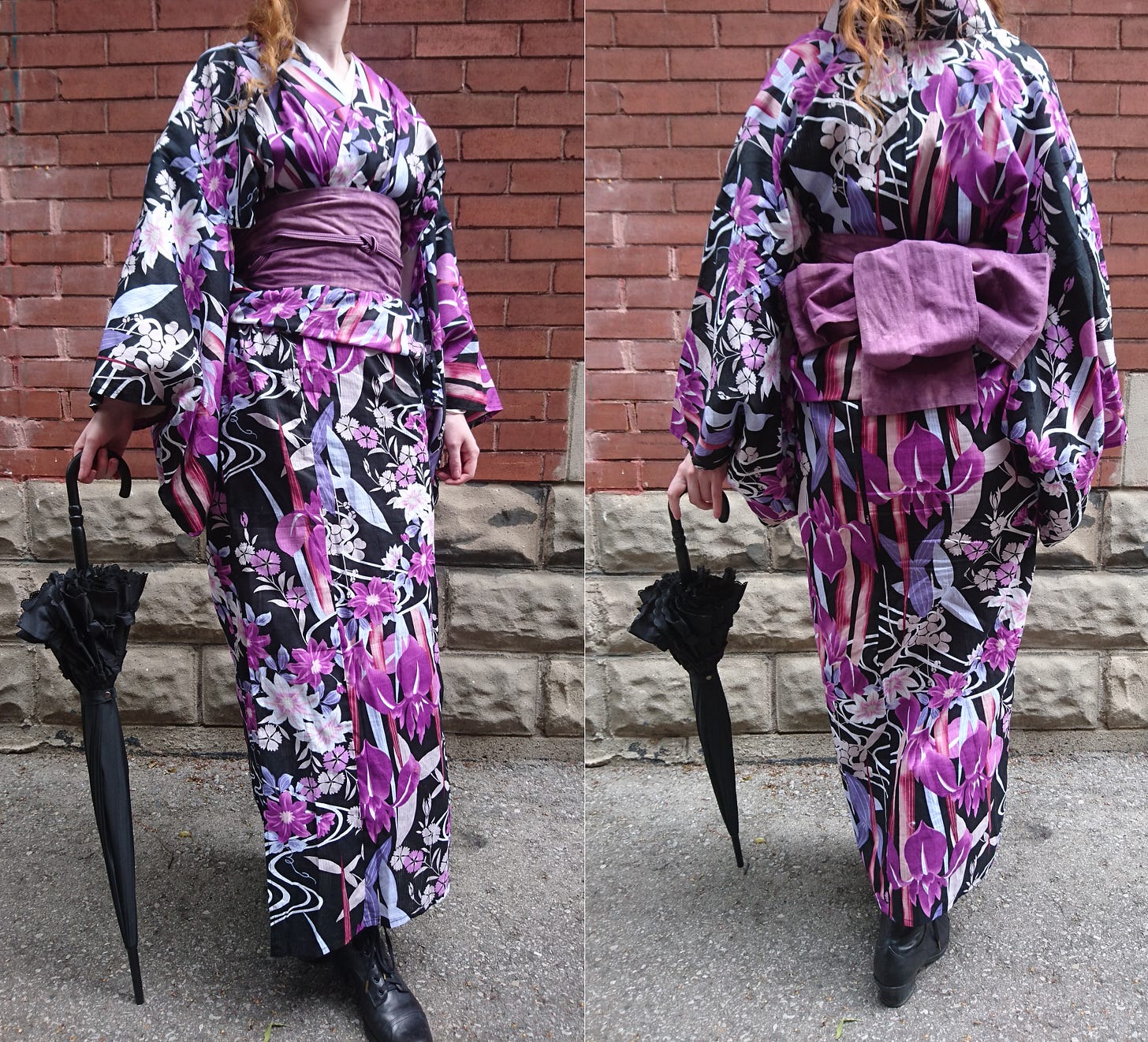Prosperity trending downwards
Correlation is not causation, but can be an indicator of a repeating symptom linked to specific events.
When I was younger I was told that most fashion trends regarding the consumption of cloth correlated with the strength of the economy. High volume garments such as bell bottoms and frills correlated with prosperity. Skinny jeans and a lack of layers matches recessions and economic decline. The statement has a logic to it, and is an easily observable pattern.
Whenever someone proposes a hypothesis - even if they imply it as a statement of fact - it is important to establish the ifs, thens, and to compare the correlation to other areas of the world and other aspects of society.
Proposal: Higher exposure to pollution in infants ages 0-6 months causes a higher likelihood that they develop asthma.
Therefore: If higher pollutants in the first six months of an infant’s life causes a higher likelihood of asthma, then places with high pollution should have high cases of asthma.
I’ll let you research that one yourself.
Proposal: The use of fabric in the creation of clothing becomes more strict (uses less fabric) when an economy is in decline.
Proposal (inverse): The usage of fabric in the creation of clothing becomes more generous (uses more fabric) the more prosperous the economy.
Therefore: If a country’s economy is in decline then the clothing in said country will become more strict with its fabric use per garment.
Once a positive or negative correlation is established, it can then be used to predict a repeat of events or similar events. This way of thinking is used by many people to uncover patterns in their lives. We all know that if the electric stove-top element is glowing red that we should not touch it, even if we don’t test that the burner each time.
Now, the original hypothesis was told to me as if it encompassed all fashion trends. I simplified it to cloth yardage and area use because those were the specific examples of the hypothesis that were presented to me. It’s possible that this hypothesis about fashion trends also correlates with dye use, weaving techniques, assembly quality.
Are there previous precedent or events that correlate with this hypothesis?
Economy in ?? = up/down. Fashion = ?? (aspects up/down)
In the 1960s the UK experienced a "period of undoubted prosperity and rising living standards."1 Their clothes ended up a mixture of bright knits, jackets, woven patterns, long dresses, and hats! Note how the dresses and jackets are all one piece unless specifically tailored for shaping the silhouette. The V&A has an article about it here.2
In the US there were two small economic ‘expansions’ in the late 1950s. The fashion at that time had a brief bump, too, using larger skirts. This article covers many aspects of women’s, men’s, and children’s wear.3
Post WWII Japan saw a resurgence of Kimono design and use after the Japanese government artificially restricted and prevented craftsmen from producing artisan goods. This isn’t a direct correlation because the government caused the previous decline due to WWII rationing on everything and literally destroying looms, but I saw an opportunity to announce that italicised bit.4 Suffice to say, there was a decline that affected fashion, and a following era of prosperity that allowed those few remaining craftsmen to continue their businesses.
We should also examine the inverse of the hypothesis, where a depression is reflected by a more cautious and conservative use of clothing.
The Great Depression started in 1929, “With the stock market crash in 1929 and with the opening of the new decade, hemlines descended back to ankle length and waistlines moved back to their natural place.”5
In France after WWII (1945) the country was recovering from the invasion and looting of their capital, and the distruction of much of their industry. There was not enough material available to hold the traditional Paris fashion show, so they made it in miniature. The podcast 99% Invisible covers the details. (I would highly recommend the ‘Articles of Interest’ series from that year, 2018).6
WWII Japan is a good example here, too, even if the restriction was partially artificial.7
Recently I have seen a few trends that leave me concerned about the current state of things.
When I purchased jeans last year the normally 100% cotton twill fabric was composed of approximately 65% cotton, 30% Lyocell, and 5% Elastaine. The former and the latter materials are expected. Lyocell is a regenerated plant fibre made from wood pulp. The fibre is lustrous, and a decent cellulose based substitution for silk or for other shiny effects; although it’s natural colour is a cool white. It has a slight stretch, little elasticity, and is very soft, which adds to the luxurious feel. It’s actually a good thing to see it on the market. Lyocell, Tencel, Modal, and the like are similarly made cellulose fibres with slightly different properties. They’re cheap to produce, use little water in their production, and are biodegradable.

Seeing this material in jeans is not so good. The fibre has its benefits, but shouldn’t be included in jeans unless the properties are understood by both the manufacturer and customer. Jeans are meant to be a heard wearing, working, functional garment. Even fashionable jeans, which admittedly is what I purchased, should maintain their appearance as advertised. Lyocell etc is not abrasion resistant, and over time will shred apart. Eventually abraision will cause a 100% lyocell cloth will shatter like silk. The fibre in my jeans did not have dye penetrate every part of the lyocell fibre. The jeans’ label notes that there will be dye leaking from the fabric. When rubbed the Lyocell sheds the outer dyed fibres, becoming closer to the original natural cold-white hue. This means that my jeans are appearing older than they are, and are aging prematurely.
If this ‘aged’ look was the intended effect then I would applaud the use of these fibres.
I suspect that this ‘aged’ appearance was not the intent, but a consequence of financial incentive. The garments were advertised as black, not as jeans that fade in colour over time, and the label contains a warnings about the dyes.
“The nature of the dye gives these jeans a rich unique feel. This dye MAY TRANSFER onto light coloured furniture, garments, and objects even after wash. Please take extra care to avoid these items. Garment should be washed before wearing following the care directions.”8

Are these not black jeans?!
When I purchased this pair of wide flared jeans I also purchased a slim cut and skinny.9 The former is 99% cotton, and the latter is woven from the same materials as my flared jeans. I suspect that the flared and slim jeans were cut with the same stamp through the cloth. The additions of the cheaper Lyocell would save of the price of cloth per square meter, and save on production costs by fitting the narrow panel between the flared hems.

I do appreciate that the jeans with lyocell included have a good amount of stretch compared to the 99% cotton jeans, but that stretch is from the elastaine, not the Lyocell.
Upon noticing this, I pondered other trends where trusty cotton has been swapped out for other materials.
It took a little browsing to discover that cotton was being traded for modal in women’s undergarments. While travelling to a yearly multicultural festival I noticed that the amount of silk available was pitiful at best. The available cottons were either from the same location, or were poor quality threads.
As Lyocell, Tencel, or Modal degrades from abrasion it causes individual fibres to snap. This break in the fibre is doubling, tripling, and quadrupling the numbers of ends from each fibre. A fibre starts with two ends, and slowly ‘creates’ more as it wears away. The more the garment is worn, the more fibres will start poking at soft tissues. Considering that these garments are worn in places of frequent friction and sensitive skin, this is a recipe for a bad time.
In North America, I observed that the 2000s skinny jeans and t-shirts or tank tops transformed into leggings, jeggings, and pre-torn jeans of 2010s. Then hotpants and bras, as well as 2015s yoga pants and crop tops (cotton → polyester). According to these symptoms, we’re not going anywhere prosperous quickly. At least, not with this attitude!
In the future, I would watch for quality to drop in a few ways.
This prediction and list of symptoms is mostly in reference to the fast fashion world. Firstly, complicated dye patterns that require careful pocket placement or seam matching will disappear, replaced by simpler patterns or woven patterns. Next, the fibre content will change. I hypothesize this order of descent: silk will be replaced by wool or polyester. Alpaca, mohair, and goat cashmere will be replaced by wool. Wool will be replaced by cotton, which is then replaced by any of the regenerated fibres. After that, all shall be replaced by polyester. The origin of these garments will change as manufacturers seek cheaper production costs. This lowering of costs will also lower assembly quality. Many more surged seams will appear instead of flat fell seams. They may not be pinned flat to the garment, and left to hang freely within the garment.
More and more garments will be made out of pieces to tessellate the pattern pieces more efficiently. This isn’t the nice “piecing is period” kind of assembly, but the type of assembly that makes cuts in major panels for little reason. The increase in labour to assemble the garment is offset significantly by the decreased cost in the area that the garment consumes and the wasted cloth. Dresses with a seam at the waist are a key example of this.
Now that I consider it. It is possible that more fast fashion clothing will incorporate knit cloth, because it stretches to accommodate growth and changes in a person’s body. (Un)fortunately, that would make each piece last longer per person, and that isn’t something that fast fashion companies would be interested in. That would cut into their revenue!
The changes that I predict aren’t new.
This is a hypothesis to confirm a correlation of economic decline with fashion trends. These symptoms of decline have been occurring slowly yet consistently for the last ten or so years, and you wouldn’t know to notice such things unless they were pointed out to non-fabric savvy individuals. I can be that people have felt the quality change unconsciously, even if they haven’t articulated their intuition. This hypothesis builds further into a hypothesis that Canada (an several other places in the world) are currently going to or are about to experience a significant recession.
This same hypothesis could be used to predict shifts into increased prosperity, too, simply by reversing the symptoms. What have you seen? What have you noticed? What trends in clothing quality were occurring around you that you didn’t observe until reflecting upon them?
This is what I wore when I travelled to the multicultural festival with a friend last weekend. This yukata is lovely, and is a printed lightweight cotton. I dyed and sowed the obi myself, and it is a little floppy. This summer I plan on making another obi with an interface cloth to stiffen the inside of it.
These clothing trends are not just in one part of the world. Where else is the hypothesis correct or incorrect?
https://econ.economicshelp.org/2010/02/economy-in-1960s-and-1970s.html
https://www.vam.ac.uk/articles/an-introduction-to-1960s-fashion
https://fashionhistory.fitnyc.edu/1950-1959/
International Wafuku lecture https://www.patreon.com/posts/kimono-in-world-72320266
https://fashionhistory.fitnyc.edu/1930-1939/
https://99percentinvisible.org/episode/a-fantasy-of-fashion-articles-of-interest-7/
Internation Wafuku lecture https://www.patreon.com/posts/kimono-in-world-72320266
https://www.reitmans.com/en/super-high-rise-black-jean-with-flare-leg/460009.html?
https://www.reitmans.com/en/high-rise-vintage-slim-leg-black-jeans/438757.html? https://www.reitmans.com/en/high-rise-black-jean-with-skinny-leg-signature-soft/459764.html?




I'm new to educating myself about fast fashion. It's disappointing and eye-opening. Your perspective adds a Canadian angle, which is hard to find out there. So, kudos for that! Also, thank you for the education on the "softer" fibres intended to replace cotton. I hadn't given those, or the cut of clothing much thought as it relates to prosperity or profit for clothing companies, but it all has a warped logic to it, I suppose. Still, I like my jeans cotton, and now that I know what to watch out for, I'll be reading labels a lot more closely! Thanks!